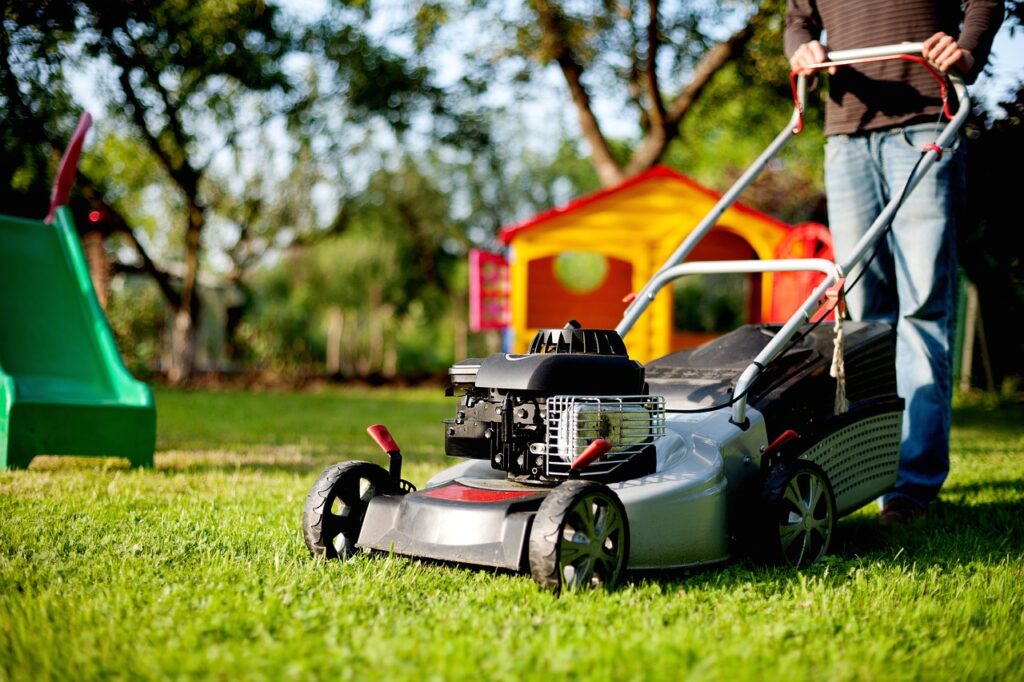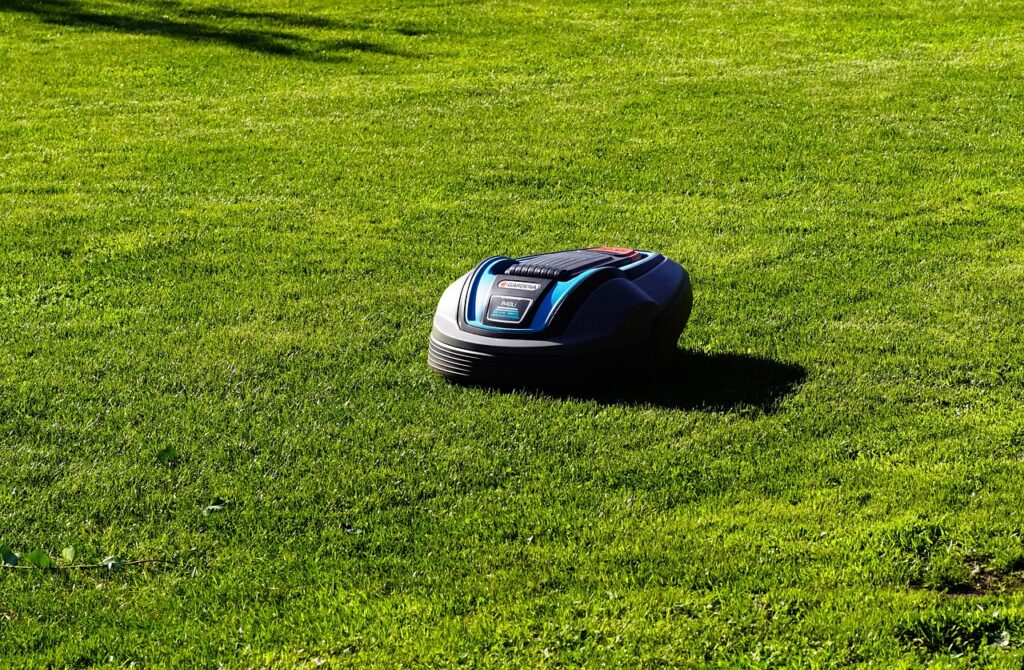With over a decade of expertise in the lawn mower industry, including six years spent testing and reviewing a variety of mowers—ranging from electric and petrol models to cordless and robotic options—I understand how essential it is for UK gardeners to select the right equipment. A well-maintained lawn enhances the beauty of your outdoor space, and choosing the best mower for your needs plays a significant role in achieving that goal.
Given the multitude of choices available, finding the perfect mower can feel overwhelming. To help you navigate this process, we’ve created a detailed guide featuring 8 crucial steps for selecting the ideal lawn mower in the UK.
From lawn size and mower type to cutting width, adjustable heights, weight, additional features, and warranty options, these key factors will ensure that you make an informed decision that suits both your gardening needs and budget.
Let’s explore the 8 steps to choosing the best lawn mowers in the UK.
How to Choose the Best Cordless Lawn Mower
1. Measure the Size of Your Lawn
The first step in choosing the right lawn mower is determining the size of your lawn. Accurately measuring the length and width of your garden in centimetres will help you decide on the most suitable mower. For example, if your lawn measures 10 metres long by 5 metres wide, the total area is 500 cm x 1000 cm.
Once you’ve measured your lawn, you can select a mower that fits its size. Smaller lawns may only need a push mower or an electric model, while larger lawns might require a more powerful petrol mower or even a ride-on mower. Choosing the right mower based on your lawn’s dimensions ensures efficient and effective mowing.
2. Choose Between Petrol, Electric, or Cordless Mowers
When selecting a lawn mower, one of the key decisions is choosing between petrol, electric, or cordless models. Each type has its benefits, so it’s important to consider your specific needs and lawn size.
Petrol Mowers
Petrol mowers are powerful and well-suited for larger lawns or thick grass. They offer great mobility since they don’t rely on a power outlet, but they tend to be heavier, noisier, and require more maintenance (such as oil changes and spark plug replacements). Petrol mowers are ideal for those with expansive gardens who need extra power.
Electric Mowers
Electric mowers are quieter, eco-friendly, and easier to maintain than petrol models, as they don’t require fuel or oil changes. However, their range is limited by the power cord, which may not be ideal for larger lawns. They are well-suited for smaller to medium-sized gardens, providing a balance of efficiency and environmental benefits.
Cordless Mowers
Cordless mowers combine the benefits of electric mowers with the added convenience of battery power. They are portable and don’t require a power cord, giving you more freedom to move around. However, their battery life can limit their runtime, and they may not offer as much power as petrol mowers. Frequent recharging may also be needed for larger lawns.
Ultimately, your choice will depend on the size of your lawn, your maintenance preferences, and how much power you need. Evaluate the pros and cons of each to find the best fit for your gardening needs.
3. Choose the Right Cutting Width
The cutting width is an important factor in determining how quickly and efficiently you can mow your lawn. It refers to the width of the mower blade, typically measured in centimetres. For example, a cutting width of 40cm means the blade spans 40cm, and the mower’s deck will be slightly larger to accommodate this blade. Keep this in mind when planning your mower’s storage space.
Petrol Mowers
Petrol mowers generally offer larger cutting widths, ranging from 40cm to 60cm or even more. This makes them ideal for larger lawns, as they can cover more ground in less time. However, with a larger cutting width comes added weight, which may make the mower harder to maneuver in tight spaces or around obstacles.
Electric Battery Mowers
Electric mowers, particularly battery-powered models, tend to have smaller cutting widths, usually between 30cm and 40cm. These are better suited for smaller lawns or areas with narrow paths. While they can take longer to mow larger lawns, they provide great precision and are more manageable in compact spaces.
When choosing a mower, consider your lawn’s size and shape. If you have a large lawn, a petrol mower with a wider cutting width will help you cover more area quickly. For smaller lawns or gardens with narrow spaces, an electric mower with a smaller cutting width might be a more efficient option.
4. Consider Adjustable Cutting Height
Adjustable cutting height is an essential feature that allows you to tailor the length of your grass to suit the needs of your lawn. The cutting height refers to the height of the grass left after mowing and is measured in millimetres. Different grass types and seasons require varying cutting heights, so a mower with adjustable height settings is crucial for achieving the best results.
Look for a mower with a single height adjustment lever. This type of system makes it easier to adjust the blade height evenly across the entire mower deck, ensuring a consistent cut. Some models feature individual height adjustment levers for each wheel, which can be more cumbersome and time-consuming to adjust.
Mowers come with different cutting height ranges, typically between 20mm to 70mm, although some may range from 10mm to 60mm. Consider the type of grass you have and the desired length of your lawn to select a mower with the appropriate cutting height options.
5. Check the Mower’s Weight
The weight of the mower plays a significant role in its manoeuvrability and ease of use. Lighter mowers are generally easier to push and turn, making them suitable for small or flat lawns. However, they might lack stability on uneven terrain or while mowing on slopes.
Heavier mowers, on the other hand, offer better stability, especially on rough or uneven surfaces. They tend to provide a smoother, more even cut and can be more effective when equipped with a rear roller, which also creates a desirable striped effect on the lawn.
When choosing a mower, consider your own strength and ability to handle it. For smaller lawns or if you’re looking for easier manoeuvrability, a lighter model might be the best option. For larger, uneven lawns or if you want a striped effect, a heavier mower with added stability might be more appropriate.
6. Explore Additional Features
When selecting a lawn mower, consider any additional features that may improve your mowing experience. Here are some options to look for:
- Grass Collection Bags: These bags collect grass clippings as you mow, helping you keep your lawn tidy without having to rake up debris afterward. Some models feature larger collection bags, reducing the need for frequent emptying.
- Mulching Capabilities: Mulching mowers cut grass into fine pieces and return it to the lawn as natural fertiliser. This eco-friendly feature helps improve soil health and saves money on fertilisers while reducing waste.
- Self-Propulsion: Self-propelled mowers move forward on their own, reducing the need for physical effort when pushing. This is particularly helpful for larger lawns or for people who find pushing a heavy mower difficult.
In addition to these features, consider the available cutting options:
- Cut & Collect: Cuts and collects grass clippings in a bag—ideal for maintaining a tidy lawn.
- Mulching: Cuts grass into small pieces and disperses them back onto the lawn as fertiliser.
- Side Discharge: Discharges clippings out of the side, useful for long or rough grass.
- Rear Discharge: Discharges clippings from the rear, suitable for rough terrain or longer grass but may leave clumps on the lawn.
By considering these additional features, you can select a mower that matches your needs, whether you’re looking for a pristine finish, better lawn health, or more convenience.
7. Read Reviews and Compare Prices
Before making a final decision on your mower purchase, it’s crucial to read reviews and compare prices. Customer reviews offer valuable insights into the performance, durability, and ease of use of the mower. Hearing from people who have already used the product can help you avoid any surprises and ensure you’re selecting a mower that meets your expectations.
There are numerous websites that feature in-depth mower reviews, including this one. On my site, I provide comprehensive reviews, often accompanied by videos, where I break down the pros and cons of different models. Additionally, I include a scoring system that highlights the strengths and weaknesses of each mower, allowing you to make a well-informed decision.
In addition to reading reviews, it’s important to compare prices from various retailers. Look for promotions, discounts, or seasonal sales to get the best deal. However, remember to consider the overall quality and reputation of the retailer. A great deal is only worthwhile if the retailer is reputable, ensuring you’re not compromising on service or after-sale support.
By reading reviews and comparing prices, you’ll be able to choose a mower that fits your needs and budget while ensuring long-term value.
8. Consider the Brand and Warranty
When selecting a mower, don’t overlook the brand and warranty. Opting for a well-known, reputable brand can ensure a higher level of reliability and quality. A strong warranty is also vital, as it provides peace of mind that any defects or issues with the mower will be handled by the manufacturer.
On my website, I not only offer detailed reviews of mowers but also evaluate the warranty and customer support provided by each brand. This information can be a game-changer, helping you avoid mowers with limited or poor warranty coverage and ensuring you’re aware of the support options available should any issues arise.
Consider the reputation of the manufacturer and the durability of their products. A brand with a history of producing reliable, well-built mowers is likely a safer choice. Additionally, choose a mower that comes with a comprehensive warranty that covers potential defects and offers ample support.
By choosing a trusted brand with a solid warranty, you’ll ensure your mower serves you well for years to come, with confidence that any potential issues will be addressed promptly by the manufacturer.
Wrapping Up
In conclusion, selecting the ideal mower in the UK requires thoughtful evaluation of several key factors. By following these 8 steps, you can confidently choose a mower that suits your lawn size, fits your budget, and aligns with your gardening preferences.
When making your decision, it’s essential to consider the mower type, cutting width, adjustable cutting height, weight, cutting options, additional features, and the brand and warranty. Taking the time to thoroughly research and compare different models will help you find a mower that meets your needs and delivers long-term, reliable performance.
For further assistance, be sure to explore my in-depth reviews and scoring system on this website, which will provide the insights you need to make an informed choice.


